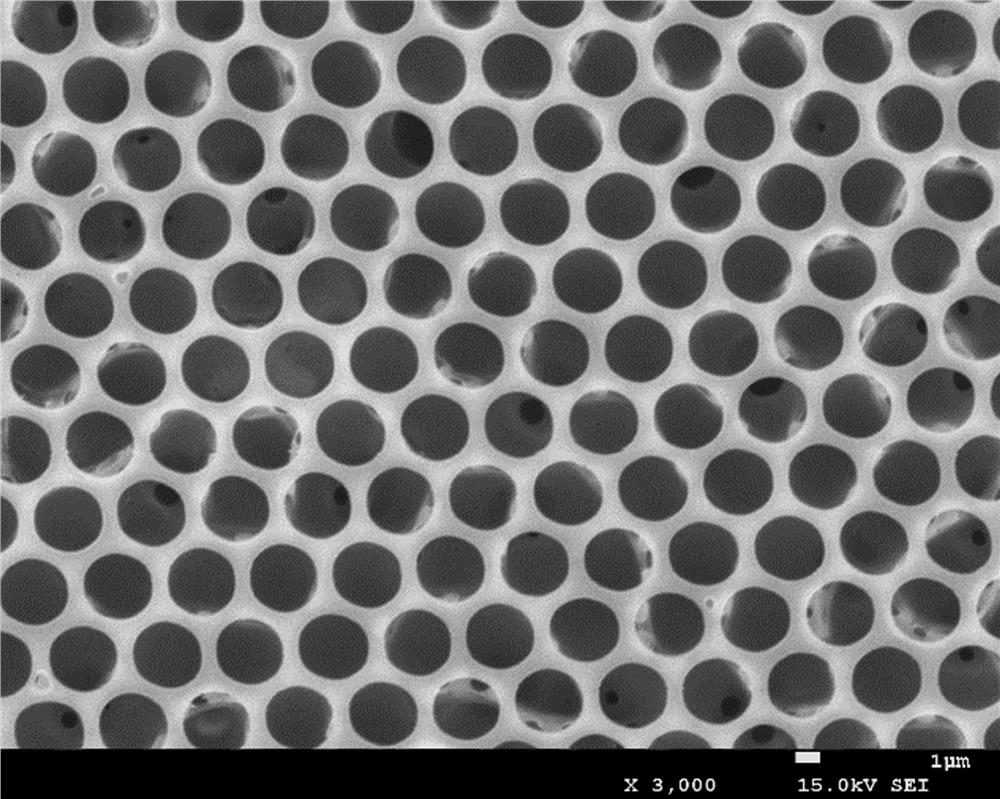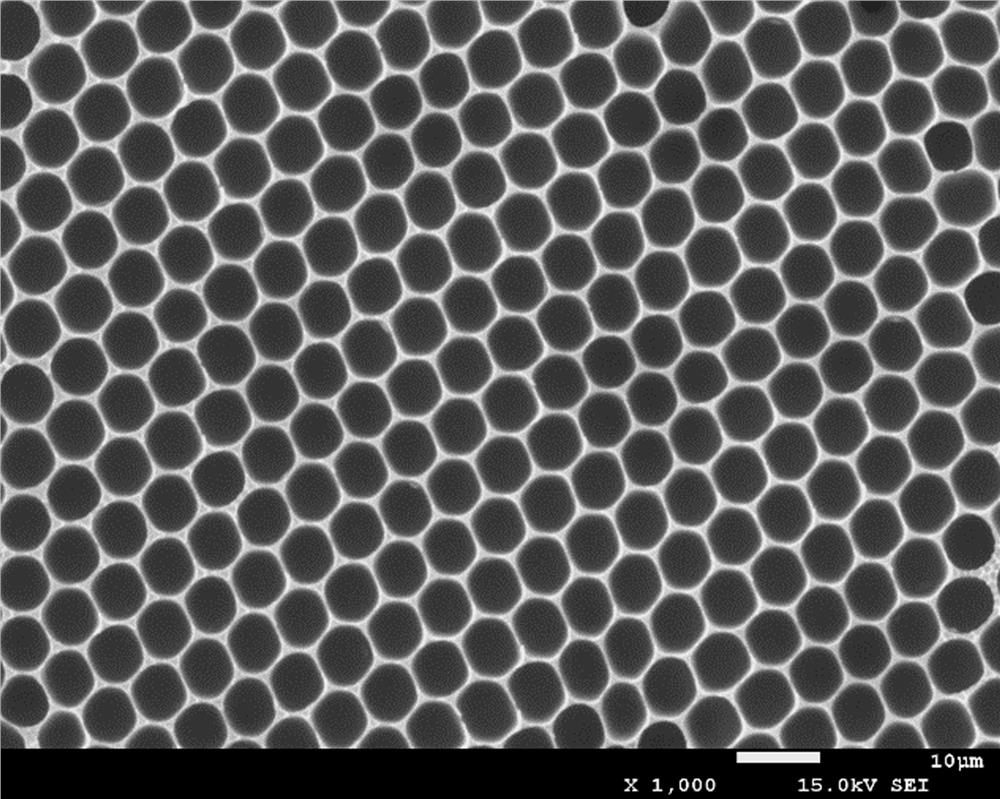A kind of preparation method of hydrophilic ordered porous membrane material
A porous membrane and hydrophilic technology, applied in the field of preparation of hydrophilic ordered porous membrane materials, can solve the problems of complex post-processing, increased cost, difficult operation, etc., and achieve the effect of simple operation, few steps and low price
- Summary
- Abstract
- Description
- Claims
- Application Information
AI Technical Summary
Problems solved by technology
Method used
Image
Examples
Embodiment 1
[0033] S1: Dissolve polylactic acid and dodecyltrimethylammonium chloride in chloroform, and prepare polymer and dodecyltrimethylammonium chloride solutions with concentrations of 20 mg / mL and 0.2 mg / mL, respectively;
[0034] S2: Pipette 40 μL of the above solution on the glass substrate, and place it on the rotating platform of the homogenizer;
[0035] S3: Pass the humid air through the test tube filled with water at a rate of 100L / h, and control the internal temperature of the homogenizer chamber to 24°C and the relative humidity to 80%, and at the same time adjust the homogenizer to start at a speed of 20rpm.
[0036] S4: After about 2 minutes, the solvent is completely volatilized, the homogenizer is stopped, and the substrate is taken out to obtain a hydrophilic ordered porous membrane.
[0037] Scanning electron microscope observation (with figure 1 ) shows that the surface of the porous membrane is all distributed with ordered microporous structures, the diameter of ...
Embodiment 2
[0040] S1: Dissolve polylactic acid and dodecyltrimethylammonium chloride in chloroform, and prepare polymer and dodecyltrimethylammonium chloride solutions with concentrations of 20 mg / mL and 1 mg / mL, respectively;
[0041] S2: Pipette 40 μL of the above solution on the glass substrate, and place it on the rotating platform of the homogenizer;
[0042] S3: Pass the humid air through the test tube filled with water at a rate of 100L / h, and control the internal temperature of the homogenizer chamber to 24°C and the relative humidity to 80%, and at the same time adjust the homogenizer to start at a speed of 20rpm.
[0043] S4: After about 2 minutes, the solvent is completely volatilized, the homogenizer is stopped, and the substrate is taken out to obtain a hydrophilic ordered porous membrane.
[0044] Scanning electron microscope observation (with figure 2 ) shows that the surface of the porous membrane is all distributed with ordered microporous structures, the diameter of t...
Embodiment 3
[0047] S1: Dissolve polylactic acid and dodecyltrimethylammonium chloride in chloroform, and prepare solutions with polymer and dodecyltrimethylammonium chloride concentrations of 30 mg / mL and 0.5 mg / mL, respectively;
[0048] S2: Pipette 80 μL of the above solution on the glass substrate, and place it on the rotating platform of the homogenizer;
[0049] S3: Pass the moist air passing through the test tube filled with water at a rate of 100L / h, and control the internal temperature of the homogenizer chamber to 26°C and the relative humidity to 80%, and at the same time adjust the homogenizer to start at a speed of 20rpm.
[0050] S4: After about 2 minutes, the solvent is completely volatilized, the homogenizer is stopped, and the substrate is taken out to obtain a hydrophilic ordered porous membrane.
[0051] Scanning electron microscope observation (with image 3 ) shows that the surface of the porous membrane is all distributed with ordered microporous structures, the diam...
PUM
| Property | Measurement | Unit |
|---|---|---|
| diameter | aaaaa | aaaaa |
Abstract
Description
Claims
Application Information
 Login to View More
Login to View More - R&D
- Intellectual Property
- Life Sciences
- Materials
- Tech Scout
- Unparalleled Data Quality
- Higher Quality Content
- 60% Fewer Hallucinations
Browse by: Latest US Patents, China's latest patents, Technical Efficacy Thesaurus, Application Domain, Technology Topic, Popular Technical Reports.
© 2025 PatSnap. All rights reserved.Legal|Privacy policy|Modern Slavery Act Transparency Statement|Sitemap|About US| Contact US: help@patsnap.com



